Region has opportunities for new species, production technologies
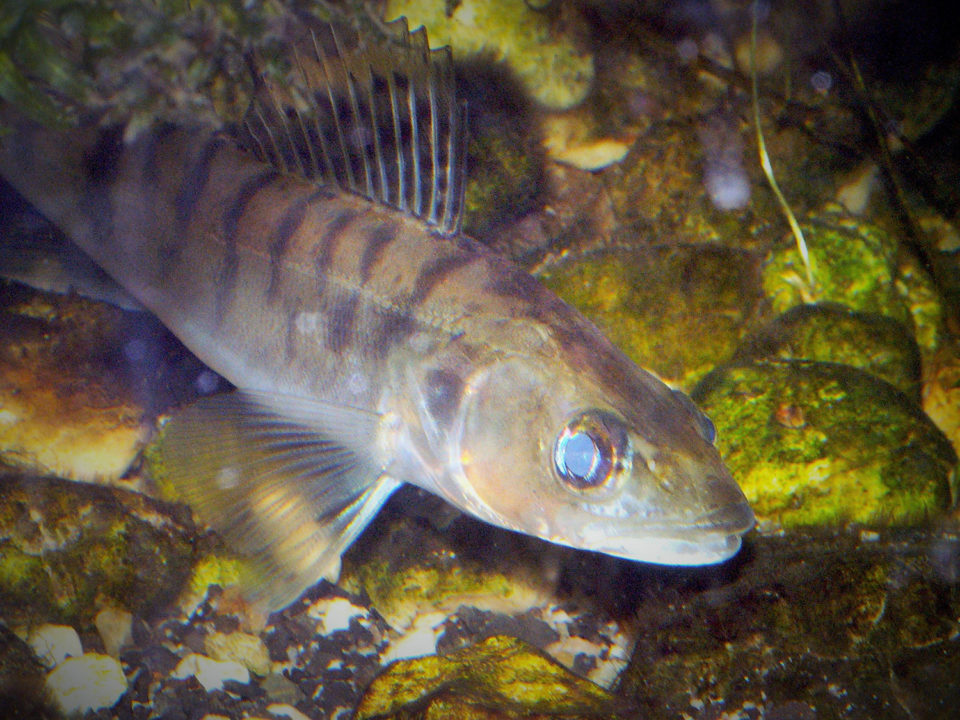
Globally, aquaculture contributes around 50 percent of all seafood, but in Russia only about 3 percent. The country’s production is only about 0.2 percent of global seafood. In Russia, seafood production development has been aimed at mostly though increases in catches from wild fisheries. The new emphasis on domestic aquaculture development is to help assure a reliable supply of a wide range of seafood products to its population at affordable prices.
The cultivation of different fish species is an important socioeconomic factor that determines the current development of the fishery industry and the regions concerned. Russia has tremendous opportunities to develop significant aquaculture production in any of its many geographical zones, with significant available water resources and other support.
Industrial-scale fish culture should be based on the same principles as broiler chicken production at industrial poultry farms. It should incorporate the latest scientific and technological solutions along the entire fish production value chain. Only this approach will make it possible develop a modern, high-tech fish farming industry.
The strategy of scientific and technological development of the Russian Federation – approved by Decree No. 642 of the President of the Russian Federation on Dec. 1, 2016 – defines as priorities for the next 10 to 15 years those activities that will produce needed scientific and technical results. It seeks to create technologies that are the basis for the innovative development of the domestic market for products and services, and the sustainable position of Russia in the external market. Such directions should ensure the transition to highly productive and environmentally friendly agro- and aquaculture activities.
Aquaculture in southern Russia
The Southern Federal District (SFD) of Russia is characterized by natural and climatic conditions that are most favorable for the production of various fish species. Various types of production can be developed there, including pond culture, industrial fish farming in the warm waters of power generation plants, trout farming in foothill areas, pasture fish farming in lakes and water storage reservoirs.
Total farmed fish production in southern Russia in 2017 reached 67,600 metric tons (MT) – or about 36 percent of the 187,000 MT reported for the entire country (Figs. 1-2).
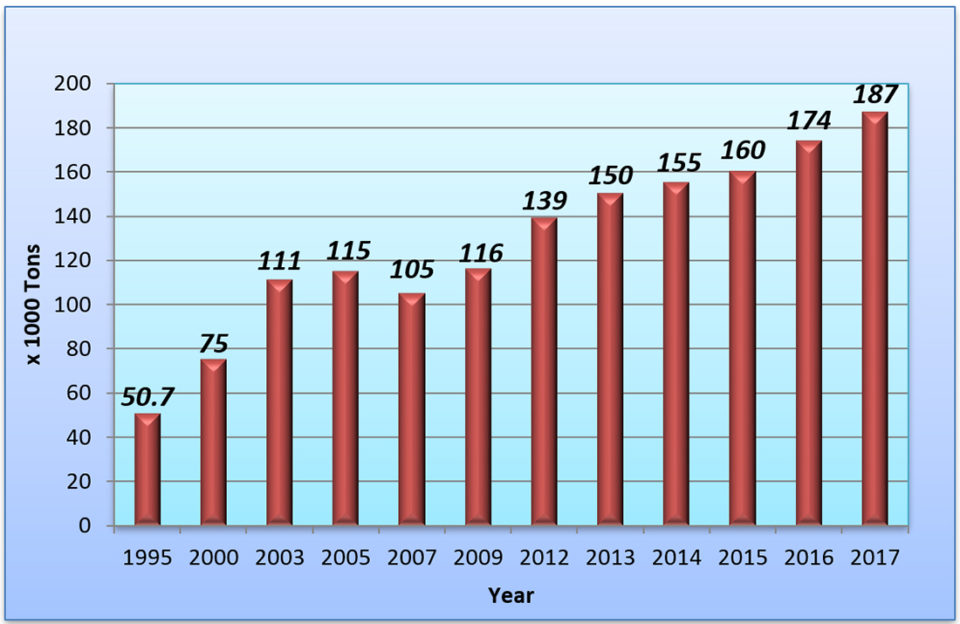
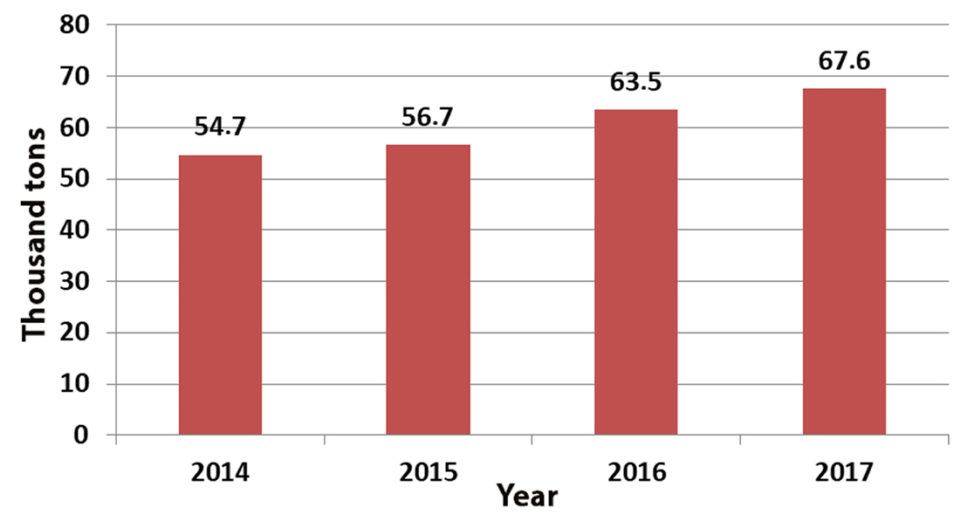
The main fish cultured in ponds in southern Russia are carp and herbivorous fish, but there is also a recent trend to expand to other native species including pike, catfish, crucian carp, pike perch, perch and others like channel catfish, so-iuy mullet, paddlefish and buffalo fish. Intensive production technologies for commercial fish culture with productivity of 1,700 to 2,400 kg per hectare have much potential and are being developed in the southern regions of Russia, and include cage fish farming in warm water bodies; in tanks using fresh, brackish and sea water; and in RAS systems.
Currently, some promising directions of aquaculture development in the southern regions of Russia include
- Extensive (“pasture”) aquaculture for production of aquatic species using the potential of natural water bodies as well as ponds.
- More industrial forms of aquaculture using cages, tanks and recirculation systems.
- Recreational aquaculture – cultivation of various fish species for sports fishing.
- Mariculture of various marine species.
Sturgeon culture
Scientific organizations developed and successfully introduced a number of scientific and technical solutions, new biotechnologies of sturgeon cultivation to fish hatcheries to southern Russia. The high plasticity and adaptability of sturgeon species make it possible to use many types of production systems for commercial sturgeon cultivation, including cages (warm and marine waters), ponds, tanks and recirculation systems.
The Southern Scientific Centre of the Russian Academy of Sciences (SSC RAS) has developed a biotechnology for environmentally friendly production of sturgeon without environmental risks. This technology involves the use of modular, intensive facilities with totally controlled environmental conditions, and use the latest scientific developments. The modern technology supports stable production of commercial fish and caviar in 12 months, with fish achieving the desired market size of 1.5 to 2 kg that the market demands.
Supporting new aquaculture development
Areas considered to support this potential new development include the appropriate selection of candidate species through the application of genomic methods and bioinformatics. Also, the development and optimization of industrial-scale, recirculating aquaculture systems, as well as alternative sources for aquafeed ingredients. It would also involve the use of systems of integrated pasture (extensive) ponds, multi-trophic systems and recirculation production, and algal technology, as well as new processing technologies for final products.
Multi-trophic systems
One direction of industry development complex multi-trophic aquaculture – as practiced in other countries – where species that need feeding, like fish, are cultured together with organisms that feed on or absorb dissolved nutrients or organic wastes, such as algae and vegetables.
Another similar direction – as developed by scientists and specialists from the Southern Scientific Centre of the Russian Academy of Sciences – involves intensive production methods using recycled waste water and sludge from recirculation systems in specialized modular systems. Special block-modular systems and biotechnological methods have been developed for various species of fish, crayfish and plant crops, with high production densities of 60 to 100 kg per cubic meter. Some of these systems have biological water purification with highly efficient filtration, and others use plants for additional water treatment.
In these intensive systems, the metabolic excretion products of one species are used by other species within the system to maximize resource utilization within the closed recirculation setup. In this vertical (multi-layered) technology, southern Russian aquaculture producers could culture sturgeon hybrids, African catfish, tilapia and Australian crayfish. Various vegetables could be farmed together as an additional biological treatment – this could involve several plants with a short production cycle, like lettuce, dill, parsley and many others, for an additional production of 4 to 6 kg of produce per meter square.
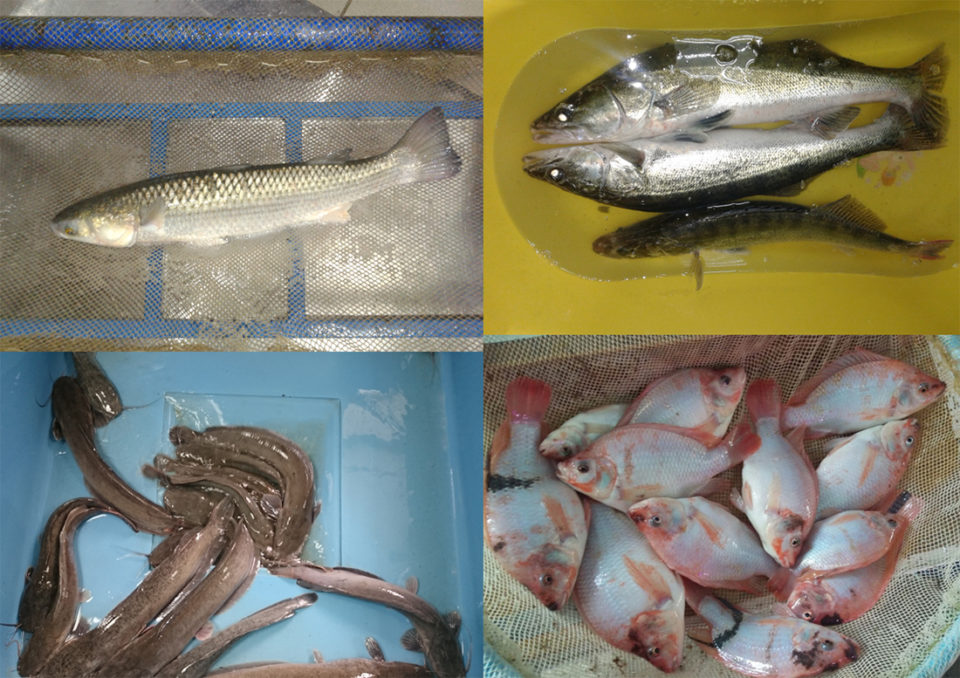
So-iuy mullet culture
One of the non-traditional aquaculture species with much culture potential is the so-iuy mullet (Liza haematocheilus), which is cultured in many countries including Japan, the United States, India, Israel and Egypt. This mullet species, because of its biological characteristics and environmental requirements, features of so-iuy mullet, its requirements to the ecological parameters of the habitat, is a very promising candidate for commercial culture in brackish and fresh water environments in the region.
Methods to adapt this mullet species to recirculation systems have been developed, as well as needed feeds, and different age groups – including broodstock animals – have been successfully tested The best results were obtained during the culture of four- and six-year old so-iuy mullets fed with aquafeeds a protein content higher than 50 percent (Fig. 3).
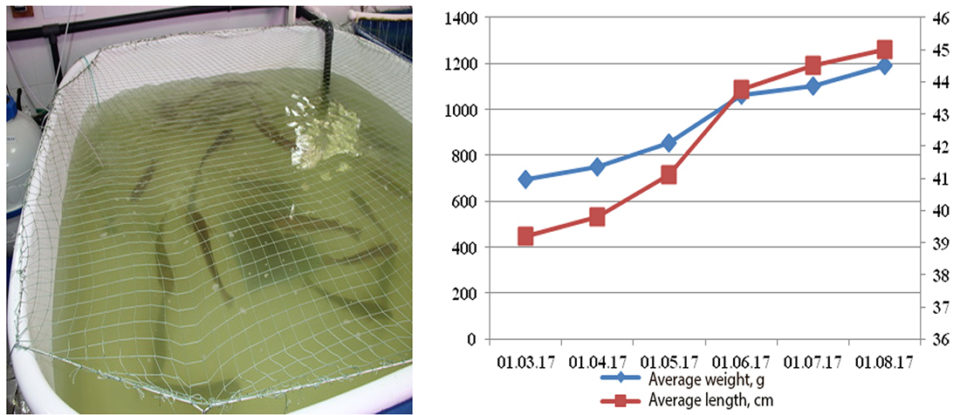
Pike-perch culture
Another promising fish species is the pike-perch (Sander lucioperca). It is usually cultured in polyculture with carps in ponds, or in extensive (pasture) aquaculture. During the last years, the commercial culture of pike-perch has been developed in various countries like Germany, Poland, Romania, Czech Republic and the Netherlands. However, even with the experience gained by various researchers elsewhere, the biotechnology for commercial breeding and culture of pike-perch is not considered to be well-developed yet.
During the last four years, researchers at the SSC RAS have been focusing on improving methods for pike-perch cultivation in recirculation systems. During this time, methods for obtaining fully fledged pike-perch under the controlled conditions have been optimized, a new technical facility has been developed with a system for pike-perch spawning, which allows maintaining the broodstock before spawning, during the spawning and cultivate viable offspring in one system.
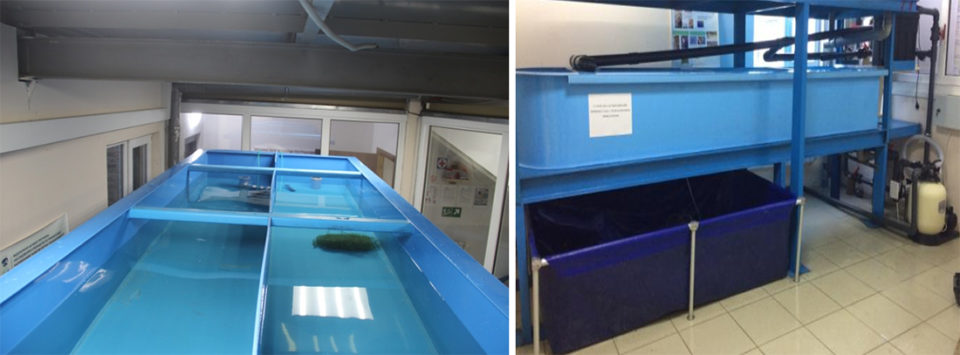
The environmental conditions – including water temperature during the spawning period, pH, dissolved oxygen levels, speed of water flow – can also be controlled in these systems. And the construction features of the system trays allow training the juveniles before release to the natural water bodies. Research in theses systems has produced spike-perch survival rates 75 to 85 percent at different life stages.
Perspectives
Southern Russia has much potential to further develop its aquaculture industry, which already contributes over one-third of the country’s annual aquaculture production. To develop this potential would involve the implementation of new technologies as well as the production of new species.
Some technological breakthroughs have been made already. Biotechnological methods for the commercial culture of new aquaculture species – such as so-iuy mullet and pike-perch – in southern Russia are comparable to similar technologies elsewhere in the world. Further developments and the introduction of new technologies in the vast agro-industrial complex of southern Russia could support a significant expansion of aquaculture production in the region.
References available from first author.
Now that you've reached the end of the article ...
… please consider supporting GSA’s mission to advance responsible seafood practices through education, advocacy and third-party assurances. The Advocate aims to document the evolution of responsible seafood practices and share the expansive knowledge of our vast network of contributors.
By becoming a Global Seafood Alliance member, you’re ensuring that all of the pre-competitive work we do through member benefits, resources and events can continue. Individual membership costs just $50 a year.
Not a GSA member? Join us.
Authors
-
Dr. Prof. Gennady G. Matishov
Federal State Institution of Science
The Federal Research Centre
Southern Scientific Centre of the Russian Academy of Sciences (SSC RAS)
41 Chekhov Street, Rostov-on-Don 344006, Russia[117,114,46,115,97,114,45,99,115,115,64,100,99,105]
-
Dr. Prof. Elena N. Ponomareva
Federal State Institution of Science
The Federal Research Centre
Southern Scientific Centre of the Russian Academy of Sciences (SSC RAS)
41 Chekhov Street, Rostov-on-Don 344006, Russia
Tagged With
Related Posts
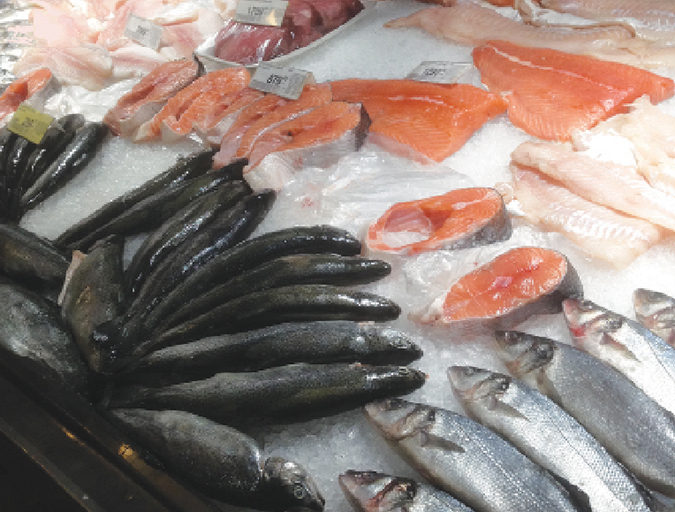
Intelligence
Russian food embargo: Who’s been hurt?
Russia’s 2014 embargo on seafood and other food imports from the United States, European Union members and other countries created multiple impacts. Russian consumers have experienced higher prices and declines in the volume and quality of seafood available. Russian companies in seafood value chains have also been hurt.

Innovation & Investment
Artemia, the ‘magic powder’ fueling a multi-billion-dollar industry
Artemia, microscopic brine shrimp used as feed in hatcheries, are the unsung heroes of aquaculture. Experts say artemia is still inspiring innovation more than 50 years after initial commercialization. These creatures are much more than Sea-Monkeys.
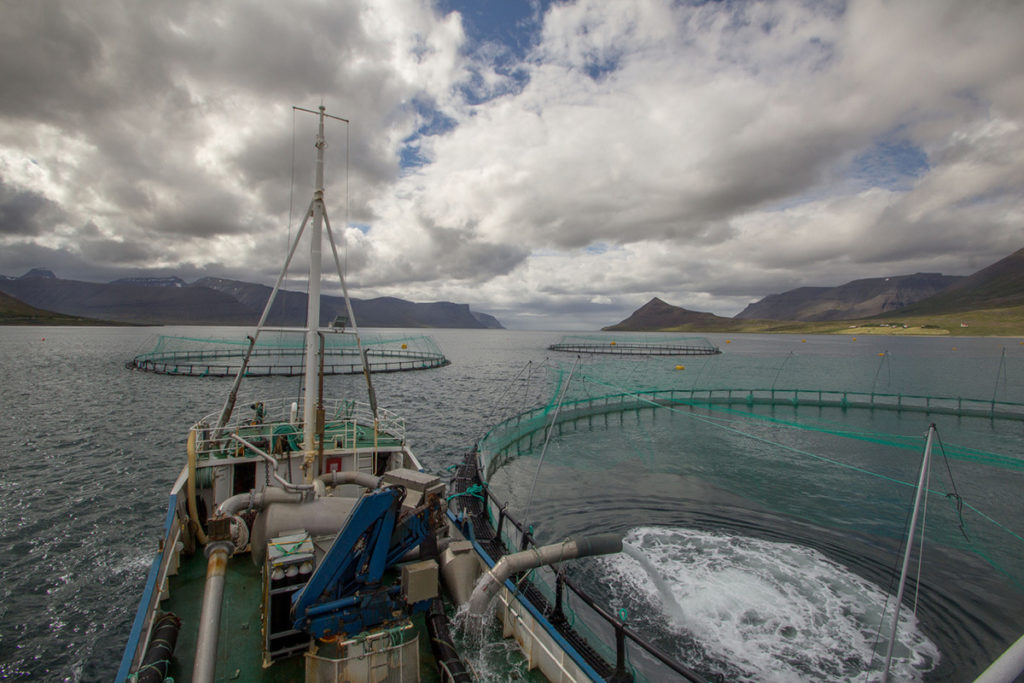
Intelligence
For these Nordic salmon farmers, it’s niche-ly done
Prioritizing quality and provenance over volume, Nordic nations Iceland and the Faroe Islands are plowing a rich furrow in the farmed salmon sector.
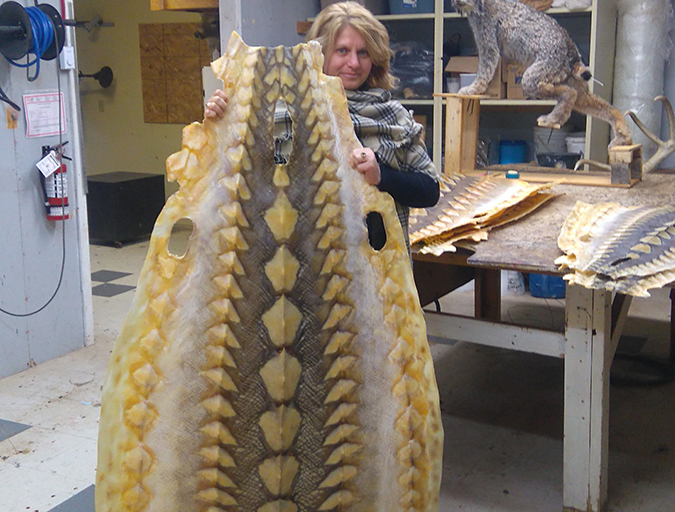
Intelligence
As sturgeon farming grows, demand concerns emerge
Caviar, or lightly salted sturgeon roe, has been enjoyed for centuries as an expensive gourmet delicacy. After a drastic decline in wild sturgeon stocks, aquaculture stepped in to fill the void. But can farmed supply find lasting balance with market demand?


